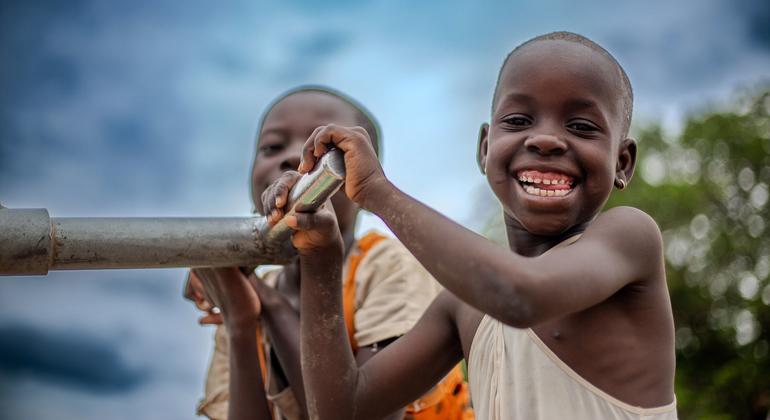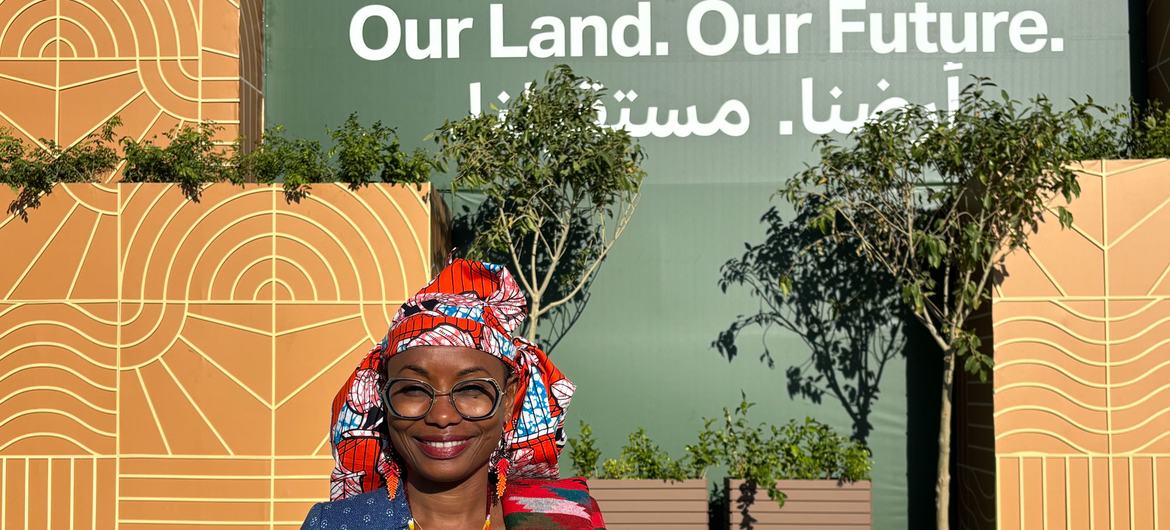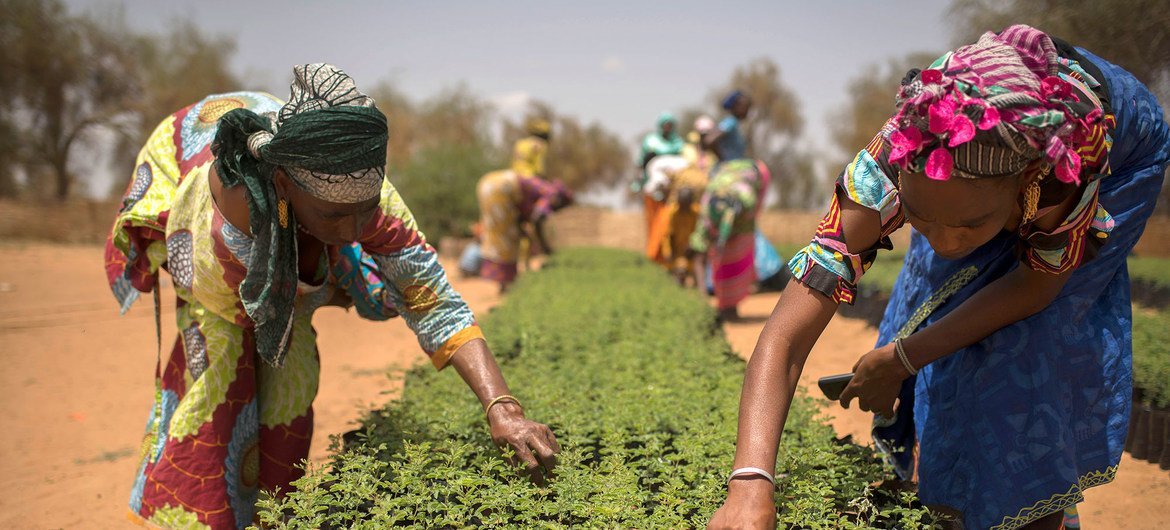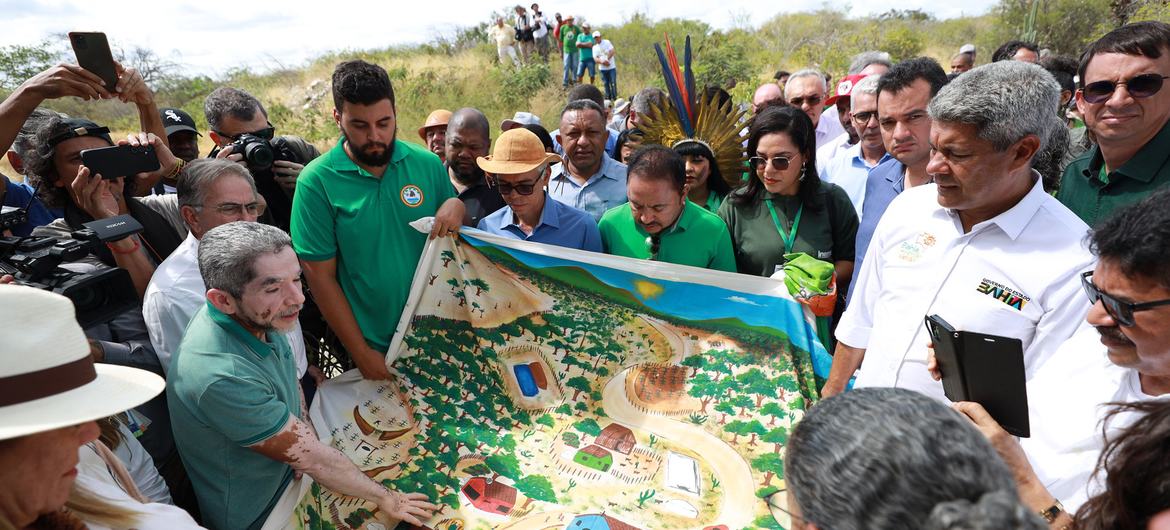Charting a path for global action on land and drought
 The largest and most inclusive UN land conference wrapped up in Riyadh, Saudi Arabia, on Saturday, charting a path for global action following two weeks of intense negotiations on how best to tackle land degradation, desertification and drought, which affects one quarter of the world.
The largest and most inclusive UN land conference wrapped up in Riyadh, Saudi Arabia, on Saturday, charting a path for global action following two weeks of intense negotiations on how best to tackle land degradation, desertification and drought, which affects one quarter of the world.
The nearly 200 countries gathered at the 16th Conference of the Parties (COP16) to the UN Convention to Combat Desertification (UNCCD) and committed to prioritising land restoration and drought resilience in national policies and international cooperation as an essential strategy for food security and climate adaptation.
While parties failed to agree on the nature of a new drought regime, they adopted a strong political declaration and 39 decisions shaping the way forward.
According to UNCCD’s newly released World Drought Atlas and Economics of Drought Resilience reports, droughts affect the livelihoods of 1.8 billion people worldwide, pushing already vulnerable communities to the brink. They also cost an estimated $300 billion per year, threatening key economic sectors such as agriculture, energy and water.
Among the main outcomes reached at COP16 were:
- A prototype launch of the International Drought Resilience Observatory, the first ever global AI-driven platform to help countries assess and enhance their capacity to cope with harsher droughts
- Mobilisation of private sector engagement under the Business4Land initiative
- The creation of designated caucuses for Indigenous Peoples and for local communities to ensure their unique perspectives and challenges are adequately represented
“Today, history has been made”, said Oliver Tester from Australia, a representative of Indigenous Peoples. “We look forward to championing our commitment to protect Mother Earth through a dedicated caucus and leave this space trusting that our voices be heard.”

UN News/Martin Samaan
Hindou Oumarou Ibrahim, an Indigenous Peoples rights campaigner, attends the COP16 desertification conference in Riyadh, Saudi Arabia.
Global drought regime
Nations also made significant progress in laying the groundwork for a future global drought regime, which they intend to complete at COP17 in Mongolia in 2026.
At COP16, more than 30 decisions were issued on key topics through the negotiation process, including migration, dust storms, enhancing the role of science, research and innovation, and empowering women to tackle environmental challenges.
Some decisions introduced new topics to the agenda, namely environmentally sustainable agrifood systems and rangelands, which cover 54 per cent of all land. The degradation of rangelands alone threatens one sixth of global food supplies, potentially depleting one third of the Earth’s carbon reserves.
At the same time, more than $12 billion was pledged to tackle land challenges around the world, especially in the most vulnerable countries. Right now, some two billion people living in pastoral areas are among the world’s most vulnerable in the face of desertification, land degradation and drought.
Tweet URL
Now, the work begins
COP16 was the largest and most diverse UNCCD COP to date. It attracted more than 20,000 participants, around 3,500 of them from civil society, and featured more than 600 events as part of the first Action Agenda to involve non-State actors in the work of the convention. It also set records for youth attendance and for the most ever private sector participants at a UN land conference, with more than 400 representatives from such industries as finance, fashion, agri-food and pharmaceuticals.
UN Deputy Secretary-General Amina J. Mohammed said now, the work begins.
“Our work does not end with the closing of COP16,” she told delegates. “We must continue to tackle the climate crisis. It is a call to action for all of us to embrace inclusivity, innovation and resilience”
She said youth and Indigenous Peoples must be at the heart of these conversations.
“Their wisdom, their voices, and their creativity are indispensable as we craft a sustainable future with renewed hope for generations to come.”
Vital turning point
The meeting also marked a turning point in raising international awareness of the pressing need to accelerate land restoration and drought resilience, according to COP16 president, Saudi Arabia’s Minister of Environment, Water and Agriculture Abdulrahman Alfadley.
“We hope the outcomes of this session will lead to a significant shift that strengthens efforts to preserve land, reduce its degradation, build capacities to address drought, and contribute to the wellbeing of communities around the world,” he said in closing remarks.
UN Under-Secretary-General and UNCCD Executive Secretary Ibrahim Thiaw agreed, underscoring a significant shift in the global approach to land and drought issues and the interconnected challenges with broader global issues such as climate change, biodiversity loss, food security, forced migration and global stability.

NOOR for FAO/Benedicte Kurzen
In Koyli Alpha, Senegal, women work in tree nurseries created as part of the Great Green Wall Initiative.
‘Solutions are within our grasp’
During COP16, participants heard that UNCCD estimates that at least $2.6 trillion in total investments are needed by 2030 to restore more than one billion hectares of degraded land and build resilience to drought.
This equals $1 billion in daily investments between now and 2030 to meet global land restoration targets and combat desertification and drought.
New pledges were also announced for large-scale land restoration and drought preparedness and for some existing projects that are already winning the battle, like the Great Green Wall, an African-led initiative to restore 100 million hectares of degraded land straddling across the Sahel region, which mobilised $11.5 million from Italy and nearly $4 million from Austria.
UNCCD Executive Secretary Ibrahim Thiaw summed up a common message heard throughout COP16 in his closing remarks.
“As we have discussed and witnessed, the solutions are within our grasp,” he said.
“The actions we took today will shape not only the future of our planet but also the lives, livelihoods and opportunities of those who depend on it.”
Read more stories on climate and the environment here.
Sacred Lands Declaration

© UNCCD/Papa Mamadou Camara
Assessing drylands in Caating, Brazil.
In a landmark decision, COP16 parties requested the creation of a caucus for Indigenous Peoples with the goal of ensuring that their unique perspectives and priorities are represented in the work of the Convention to Combat Desertification.
The Sacred Lands Declaration, presented during the inaugural Indigenous Peoples Forum on 7 December, underscored their role in sustainable resource management and called for greater involvement in global land and drought governance, including through participation in land restoration efforts.
Here are some calls for action in the declaration:
- We call on parties to ensure an approach that embraces human rights and Indigenous Peoples’s rights in all policies and actions related to land restoration and resilience building
- We call on parties to respect, recognise, promote and protect Indigenous Peoples’ rights, based on the fundamental right to self-determination, provided for in the UN Declaration on the Rights of Indigenous Peoples and the International Convention on the Elimination of Racial Discrimination and its General Recommendation 23
-
We encourage the UNCCD to create a dedicated fund for Indigenous Peoples’ initiatives on land restoration, conservation, desertification and drought resilience
Read the full Sacred Lands Declaration here.



